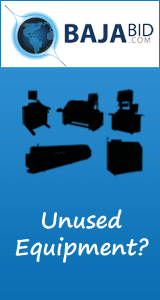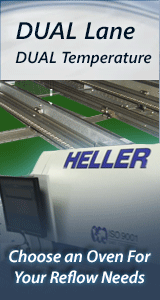Novel Approach to Void Reduction Using Microflux Coated Solder Preforms for QFN/BTC Packages that Generate Heat
Published: |
August 7, 2019 |
Author: |
Anna Lifton, Paul Salerno, Jerry Sidone, Oskar Khasalev |
Abstract: |
The requirement to reconsider traditional soldering methods is becoming more relevant as the demand for bottom terminated components (QFN/BTC) increases. Thermal pads under said components are designed to enhance the thermal and electrical performance of the component and ultimately allow the component to run more efficiently. Additionally, low voiding is important in decreasing the current path of the circuit to maximize high speed and RF performances. The demand to develop smaller, more reliable, packages has seen voiding requirements decrease below 15 percent and in some instances, below 10 percent. Earlier work has demonstrated the use of micro-fluxed solder preforms as a mechanism to reduce voiding. The current work builds upon these results to focus on developing an engineered approach to void reduction in leadless components (QFN) through increasing understanding of how processing parameters and a use of custom designed micro-fluxed preforms interact. Leveraging the use of a micro-fluxed solder preform in conjunction with low voiding solder paste, stencil design, and application knowhow are critical factors in determining voiding in QFN packages. The study presented seeks to understand the vectors that can contribute to voiding such as PCB pad finish, reflow profile, reflow atmosphere, via configuration, and ultimately solder design. A collaboration between three companies consisting of solder materials supplier, a power semiconductor supplier, and an electronic assembly manufacturer worked together for an in-depth study into the effectiveness of solder preforms at reducing voiding under some of the most prevalent bottom terminated components packages. The effects of factors such as thermal pad size, finish on PCB, preform types, stencil design, reflow profile and atmosphere, have been evaluated using lead-free SAC305 low voiding solder paste and micro-fluxed preforms. Design and manufacturing rules developed from this work will be discussed.... |
|
|
|
Company Information:
More articles from Alpha Assembly Solutions »
- Jul 02, 2020 - Using Rheology Measurement As A Potentially Predictive Tool For Solder Paste Transfer Efficiency And Print Volume Consistency
- Apr 01, 2020 - Low Temperature Soldering Using SN-BI Alloys
- Oct 16, 2019 - Effect Of Voids On Thermo-Mechanical Reliability of Solder Joints
- Jul 13, 2017 - Divergence in Test Results Using IPC Standard SIR and Ionic Contamination Measurements
- See all SMT / PCB technical articles from Alpha Assembly Solutions »
More SMT / PCB assembly technical articles »
- Apr 11, 2022 - iNEMI Webinar 07.07.2021 - PCB Cleaning | ZESTRON Americas

- Jan 28, 2022 - Open Radio Unit White Box 5G | Whizz Systems

- Nov 10, 2021 - Understanding the Cleaning Process for Automatic Stencil Printers | ITW EAE

- Oct 20, 2021 - PCB Surface Finishes & The Cleaning Process - A Compatibility Study | ZESTRON Americas

- Oct 06, 2021 - Cleaning Before Conformal Coating | ZESTRON Americas

- Browse Technical Library »
Novel Approach to Void Reduction Using Microflux Coated Solder Preforms for QFN/BTC Packages that Generate Heat article has been viewed 589 times







